Single Slit Diffraction (AQA A Level Physics): Revision Note
Exam code: 7408
Diffraction
Diffraction is:
The spreading out of waves after they pass through a narrow gap or around an obstruction
Diffraction effects are most noticeable when the wavelength of the wave and the width of the gap are similar in size
For light, this effect becomes significant with very narrow slits, such as those used in single or double slit experiments

Diffraction: after passing through a narrow gap, the waves curve as they spread out
Single slit diffraction pattern
The diffraction pattern of light passing through a single slit is a series of light and dark fringes on a screen
The bright fringes are areas of maximum intensity, produced by the constructive interference of each part of the wavefront as it passes through the slit
The dark fringes are areas of zero or minimum intensity, produced by the destructive interference of each part of the wavefront as it passes through the slit
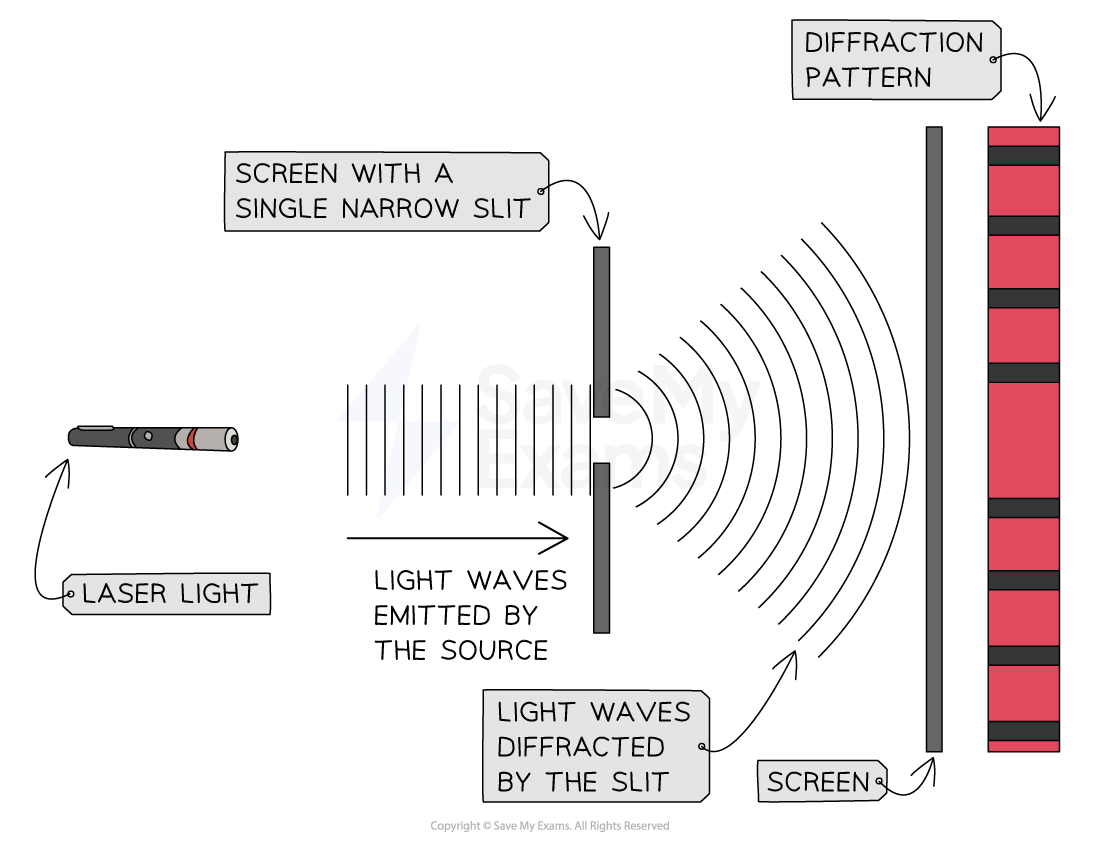
The diffraction pattern produced by a laser beam diffracted through a single slit onto a screen is different to the diffraction pattern produced through a double slit
The central maximum is:
much wider and brighter than the other bright fringes
much wider than that of the double-slit diffraction pattern
On either side of the wide central maxima are much narrower and less bright maxima
These get dimmer as the order increases
Single slit intensity pattern
If a laser emitting blue light is directed at a single slit, where the slit width is similar in size to the wavelength of the light, its intensity pattern will be as follows:
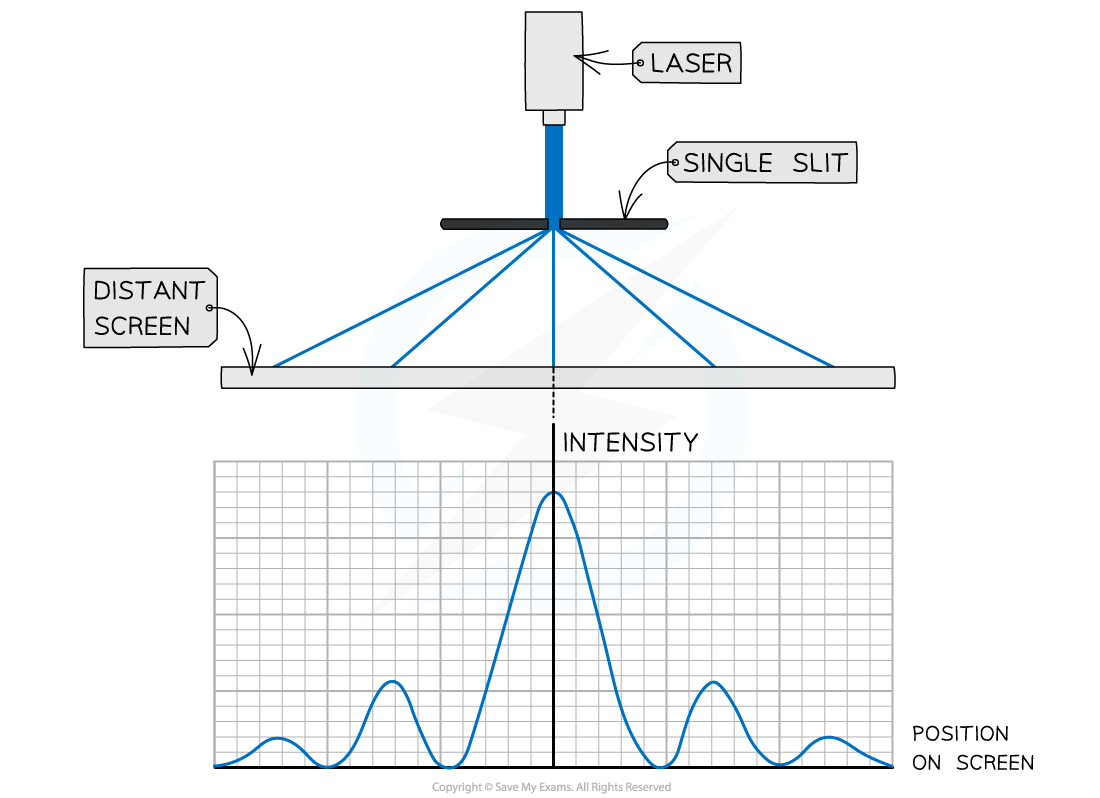
The intensity pattern of blue laser light diffracted through a single slit
The features of the single slit intensity pattern are:
The central bright fringe has the greatest intensity of any fringe and is called the central maximum
The dark fringes are regions with zero intensity
Moving away from the central maxima either side, the intensity of each bright fringe gets less
Single slit diffraction and intensity patterns of white light
A source of white light diffracted through a single slit will produce a diffraction pattern which is different to that produced by a double slit (or a diffraction grating)
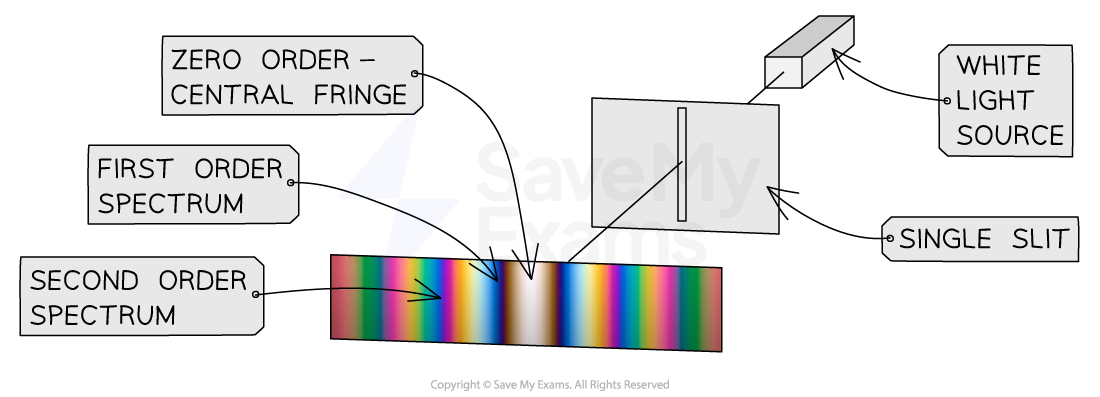
The diffraction pattern of white light diffracted through a single slit
The central maximum is bright white because constructive interference from all the colours happens here:
Much wider and brighter than the other bright fringes
Much wider than that of the double-slit diffraction pattern
All other maxima are composed of a spectrum
Separate diffraction patterns can be observed for each wavelength of light
The shortest wavelength (violet / blue) would appear nearest to the central maximum because it is diffracted less
The longest wavelength (red) would appear furthest from the central maximum because it is diffracted more
The colours look blurry, and further away from the central maximum, the fringe spacing gets so small that the spectra eventually merge without any space between them
As the maxima move further away from the central maximum, the wavelengths of blue observed decrease and the wavelengths of red observed increase
A source of white light diffracted through a single slit will produce the following intensity pattern:
The central maxima is equal in intensity to that of monochromatic light
The non-central maxima are wider and less intense
The fringe spacing between the maxima get smaller
The amount of red wavelengths in the pattern increases with increasing maxima, n increases from n = 1, 2, 3...
The amount of blue wavelengths decrease with increasing maxima
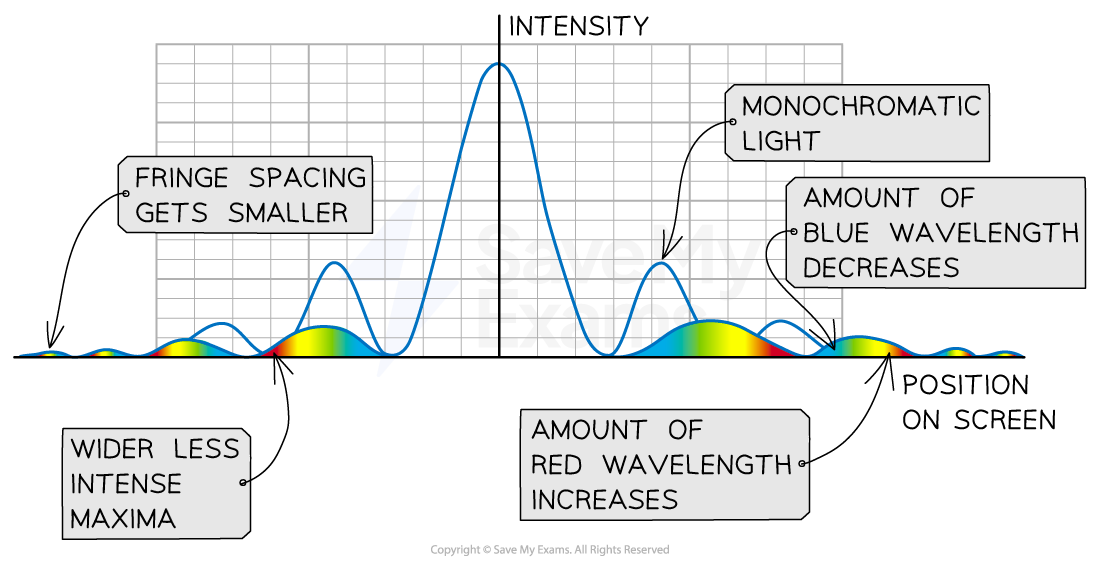
The intensity pattern for the diffraction of white light through a single slit
Single slit diffraction and Young's fringes
In Young's double slit experiment, light passing through the two slits interfere, but each slit also diffracts light like a single slit
The double-slit interference pattern has equally spaced intensity peaks with maxima of equal intensity
The single-slit intensity pattern has a distinctive central maximum and subsequent maxima at lower intensity
Together, the combined intensity pattern has equally spaced bright fringes but now within a single slit 'envelope'
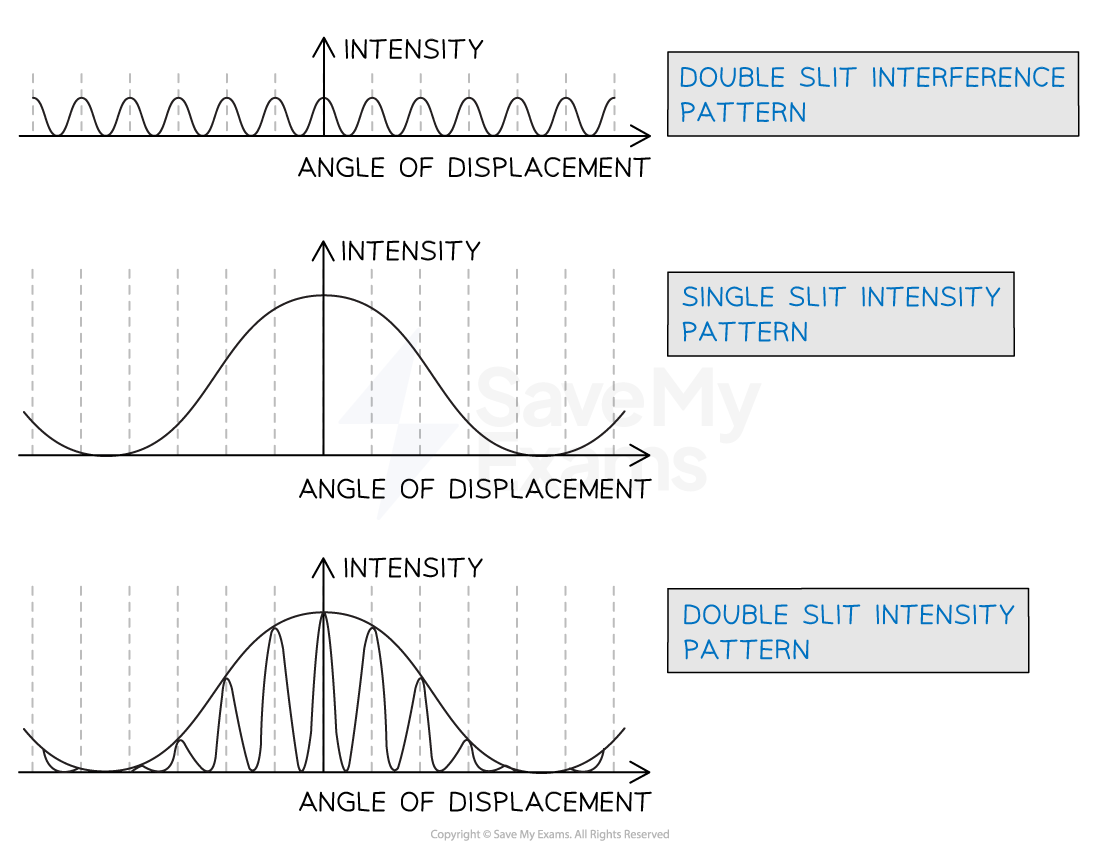
Combined single-slit intensity pattern and double-slit interference pattern
Single Slit Diffraction
As discussed above, the effects of diffraction are most prominent when the gap size is approximately the same as the wavelength of the wave
As the gap size increases, compared to the wavelength, the waves spread out less after they pass through the gap
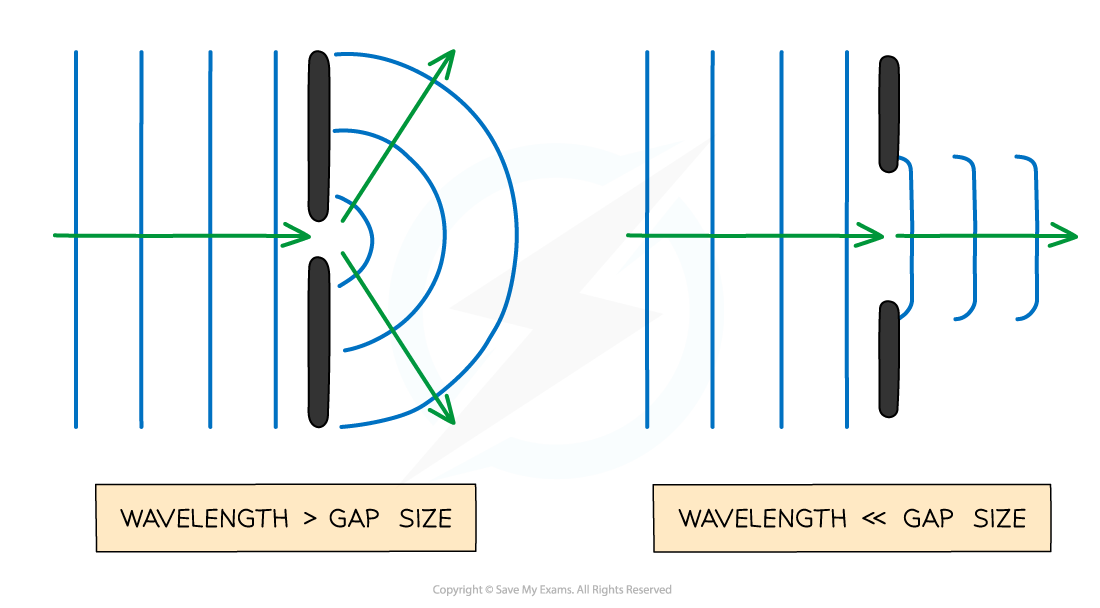
The size of the gap (compared to the wavelength) affects how much the waves spread out when diffracted through a gap
Changes in wavelength
When the wavelength passing through the gap is increased, then the wave diffracts more
This increases the angle of diffraction of the waves as they pass through the slit
So the width of the bright maxima is also increased
Red light, which has the longest wavelength of visible light, will produce a diffraction pattern with wide fringes
Blue light, which has a much shorter wavelength, will produce a diffraction pattern with narrow fringes
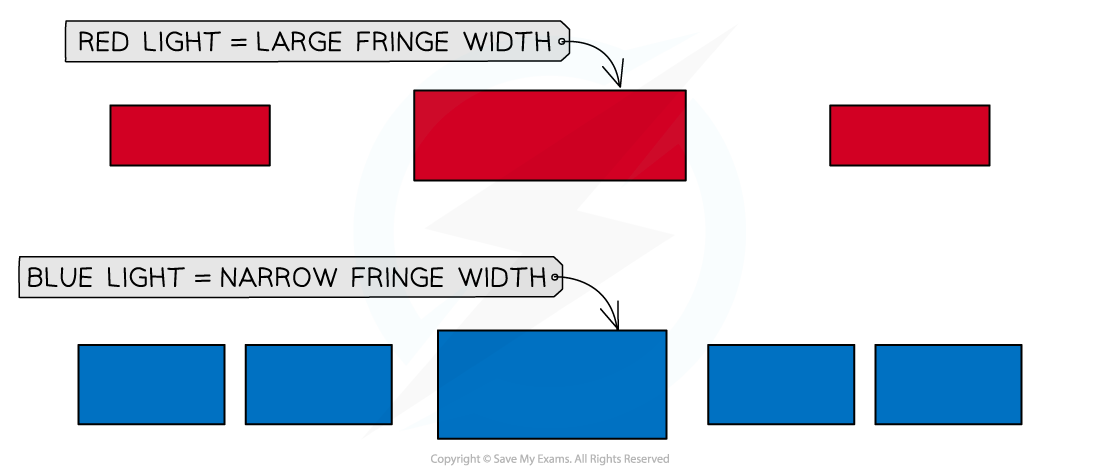
Fringe width depends on the wavelength of the light
If the blue laser is replaced with a red laser:
There is more diffraction as the waves pass through the single slit
So the fringes in the intensity pattern would therefore be wider
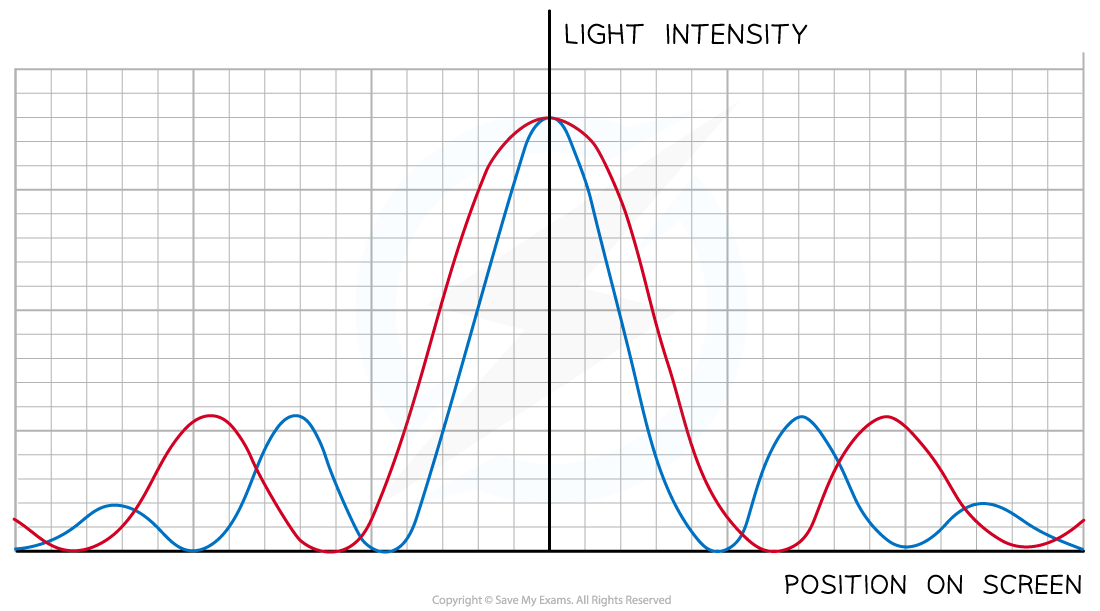
The intensity pattern of red laser light shows that longer wavelengths diffract more than shorter wavelengths
Changes in slit width
If the slit was made narrower:
The angle of diffraction is greater
So, the waves spread out more beyond the slit
The intensity graph will show that:
The intensity of the maxima decreases
The width of the central maxima increases
The spacing between fringes is wider
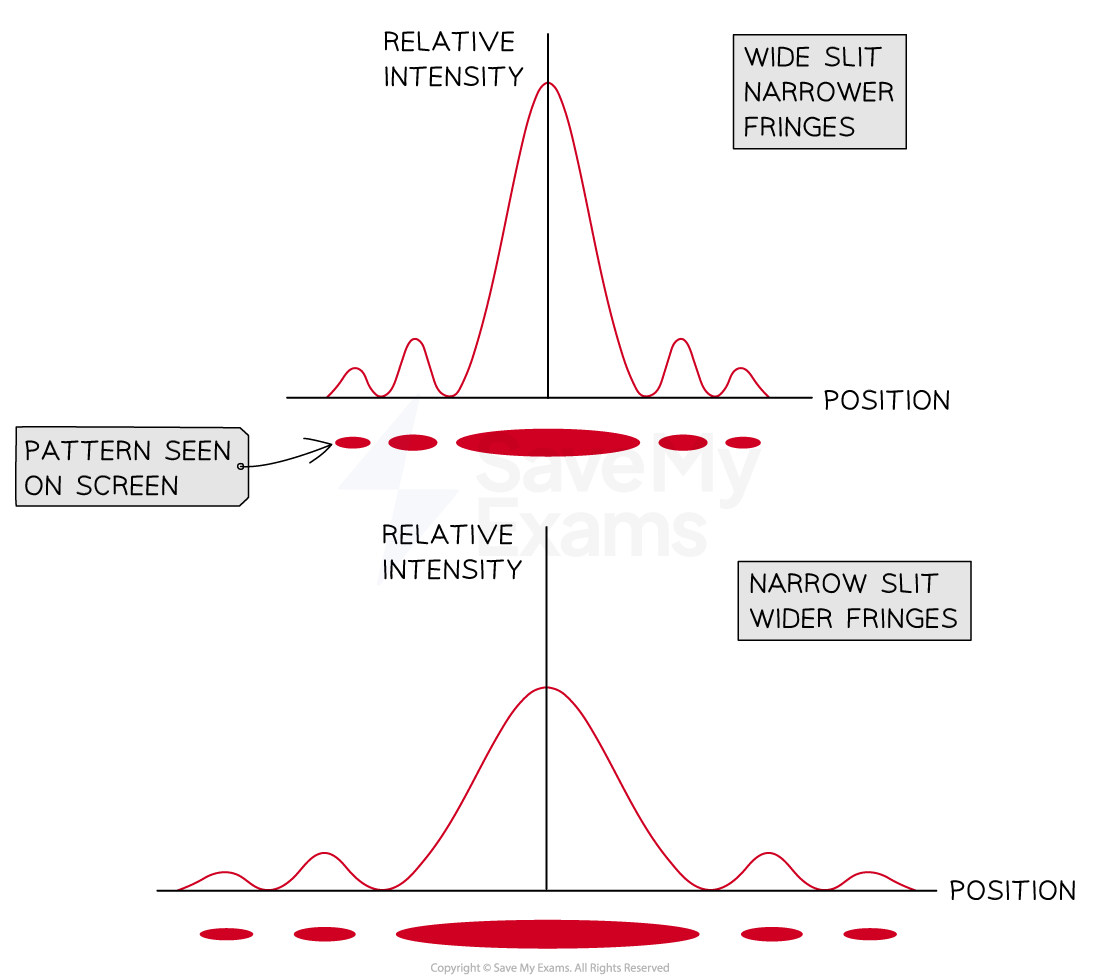
When the slits are made wider then the fringes become narrower and vice versa
Worked Example
When a wave is travelling through air, which scenario best demonstrates diffraction?
A. UV radiation through a gate post
B. Sound waves passing a steel rod
C. Radio waves passing between human hair
D. X-rays passing through atoms in a crystalline solid
Answer: D
Diffraction is most prominent when the wavelength is close to the aperture size
UV waves have a wavelength between 4 × 10–7 – 1 × 10–8 m so won’t be diffracted by a gate post
Sound waves have a wavelength of 1.72 × 10–2 – 17 m so would not be diffracted by the diffraction grating
Radio waves have a wavelength of 0.1 – 106 m so would not be diffracted by human hair
X-rays have a wavelength of 1 × 10–8 – 4 × 10–13 m which is roughly the gap between atoms in a crystalline solid
Therefore, the correct answer is D
Examiner Tips and Tricks
When drawing diffracted waves, take care to keep the wavelength (the distance between each wavefront) constant. It is only the amplitude of the wave that changes when diffracted.

Unlock more, it's free!
Did this page help you?